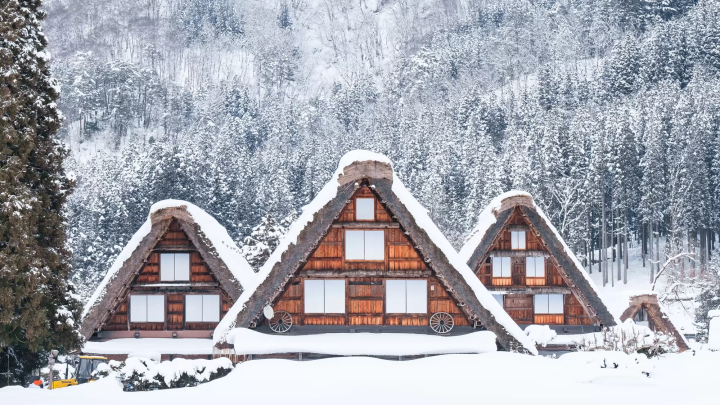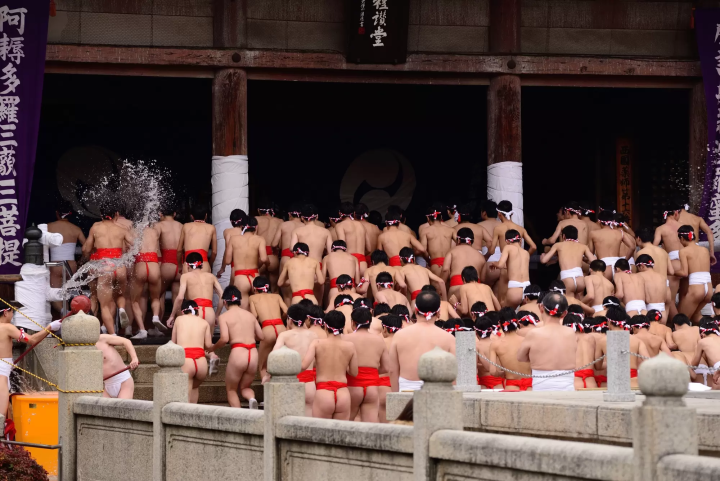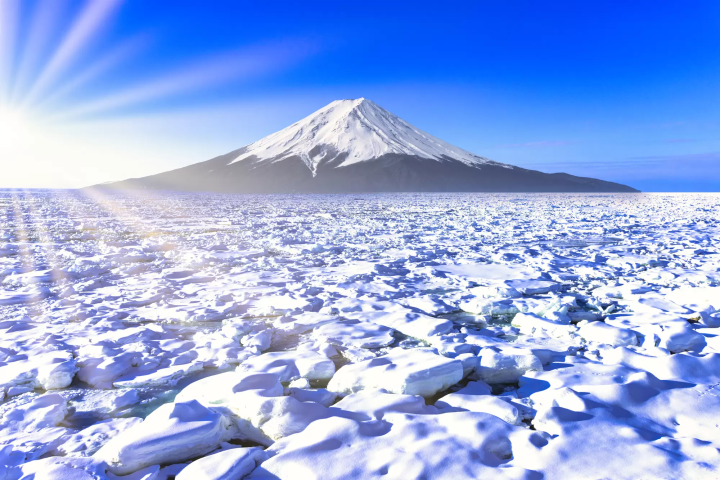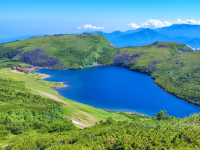January Weather in Japan 2025: Events, Food, and Travel Tips

January in Japan brings colder temperatures, perfect for winter sports and delightful New Year's festivities. In this article, we will explore the weather conditions in Japan by region, highlight popular events, showcase seasonal foods, and provide helpful travel tips for your visit.
January in Japan
January is a wonderful time to visit Japan, albeit on the colder side. It's a time when you can witness many celebrations and customs related to the New Year. Please be aware that some shops and attractions may be closed from January 1st to the 3rd.
With the winter sports season kicking off in December, you can enjoy skiing and snowboarding in popular areas like Hokkaido and Nagano. Don't miss the famous Zao Snow Monster Festival in Yamagata, which offers a variety of winter activities for everyone to enjoy.
Read on to learn about January weather in Japan by region, along with recommended events, delicious dishes, and activities to enhance your stay.
January in Japan 2024
January Weather in Japan
- January Weather in Tokyo
- January Weather in Osaka And Kyoto
- January Weather in Hiroshima
- January Weather in Hokkaido
- January Weather in Fukuoka And The Kyushu Region
January Events in Japan
1. New Year’s Celebrations
2. Zao Snow Monster Festival in Yamagata
3. Ome Daruma Market in Tokyo
4. Nozawa Onsen Fire Festival in Nagano
5. Shittenoji Doya Doya Festival in Osaka
Foods to Enjoy in January
Best Destinations in January
- Ski Resorts Around Japan
- Zao in Yamagata
- Hokkaido’s Drift Ice Tours in Abashiri
- Gifu’s Shirakawago Winter Light-Up Event 2025
- Hot Spring Resorts Around Japan
- Major Cities for New Year’s Sales
January Weather in Japan

Shirakawago, Gifu. Photo by Pixta
January brings colder weather, and in some areas, particularly in the north, it can even bring snow. However, don’t let that deter you from visiting—there’s no reason not to enjoy all that Japan has to offer during this wonderful month.
Average January temperatures in Japan range from 12℃ to -1℃ (53.6℉ to 30℉) across most regions. While northern areas like Hokkaido tend to be much colder, the southern regions, such as Okinawa and Kyushu, experience slightly milder temperatures.
Be cautious in the northern regions, as they may experience significant snowfall.
*The information on temperatures and rainfall is based on reports published by the Japan Meteorological Agency.
January Weather in Tokyo

Photo by Pixta
The highest recorded temperature for January 2024 in Tokyo was 11.8℃ (53.24℉), while the lowest was 2.9℃ (37.22℉). Tokyo’s average temperature in January is 5.7℃ (42.26℉), with an average rainfall of 36.0mm.
January can be quite cold, so we recommend packing winter clothing, including long pants, warm layers, a coat, and winter accessories like gloves, a hat, and a scarf. Be sure to layer up, especially during the early mornings and evenings when temperatures tend to drop.
January Weather in Osaka And Kyoto

Photo by Pixta
As neighboring prefectures, Osaka and Kyoto both experience a chilly January, although there are slight temperature differences between the two. In January 2024, Osaka recorded a highest temperature of 10.8℃ (51.44℉) and a lowest of 3.6℃ (38.48℉). Meanwhile, Kyoto's highest temperature was 10.2℃ (50.36℉) with a lowest of 2.5℃ (36.5℉).
The average temperature in Osaka was 7.1℃ (44.78℉), with an average rainfall of 23.5mm, while Kyoto averaged 6℃ (42.8℉) with an average rainfall of 53.5mm.
If you plan to visit one or both cities, we recommend dressing warmly in a down coat, long pants, and warm tops such as turtlenecks. Don’t forget to bring hats, scarves, and gloves for early morning and evening activities.
↑ Return to the top of article.
January Weather in Hiroshima

Photo by Pixta
Although located in the southern part of Japan, Hiroshima still experiences its fair share of cold days in January. In January 2024, the highest recorded temperature was 11℃ (51.8℉) and the lowest was 3.1℃ (37.58℉), indicating that even the warmest days can feel quite chilly.
The average temperature in Hiroshima was 6.5℃ (43.7℉), with an average rainfall of 42.5mm. Early mornings and evenings tend to be particularly cold, so we recommend packing a warm jacket or down coat, as well as warm tops and bottoms, along with gloves, hats, and scarves.
January Weather in Hokkaido

Photo by Pixta
Hokkaido, located in the northernmost part of Japan, experiences some of the coldest winters, starting as early as September. In January 2024, Sapporo recorded a highest temperature of 1.1℃ (33.98℉) and a lowest of -4.9℃ (23.18℉), with an overall average temperature of -1.8℃ (28.76℉).
For those considering Hakodate, its average temperature was -0.2℃ (31.64℉), with a high of 3.1℃ (37.58℉) and a low of -3.7℃ (25.34℉).
Rainfall averaged 153mm in Sapporo and 101mm in Hakodate. Notably, the total snowfall in January reported for both areas was significant, with Sapporo receiving 161cm and Hakodate 74cm (Source: JMA).
If you’re planning to visit Hokkaido, we recommend packing warm clothing, including puffer coats, long pants, turtleneck shirts, sweaters, hats, gloves, scarves, and boots.
↑ Return to the top of article.
January Weather in Fukuoka and the Kyushu Region

Nagasaki's Hamanomachi shopping street. Photo by Pixta
The weather in Fukuoka and the Kyushu region is generally warmer in winter compared to other parts of Japan, but it’s not as warm as you might expect. In January 2024, the highest recorded temperature was 21.2℃ (70.16℉) and the lowest was 3.6℃ (38.48℉).
Fukuoka had an average rainfall of 80.5mm and an average temperature of 8.3℃ (46.94℉). Specifically, Fukuoka's highest reported temperature was 11.6℃ (52.88℉), with a low of 5℃ (41℉).
If you’re heading to Okinawa, we recommend packing layers, such as breathable tops and pants along with a light coat. Layers are essential, as early mornings and evenings can be chilly while daytime temperatures can be relatively warm. When visiting the northern parts of Kyushu, be sure to bring a warm coat, pants, and tops, as well as gloves, a hat, and a scarf.
Read also
↑ Return to the top of article.
January Events in Japan
There are many events related to the New Year in January, as well as festivities related to winter and snow.
1. Traditional Japanese New Year’s Celebrations

People lined up at Mitake Shrine in Higashi Hiroshima City. Photo by Pixta
Japanese New Year’s celebrations differ significantly from those in the U.S. Typically, people return to their hometowns to celebrate with family. In the weeks leading up to the new year, homes and shops undergo a thorough cleaning known as Oosoji.
Although not every family follows the same traditions, common activities include watching NHK’s 24-hour program Kohaku Uta Gassen on New Year’s Eve, followed by enjoying traditional osechi ryori.
On New Year's Day, it is customary to visit a temple or shrine, a practice known as hatsumode. Some people go as early as midnight, while others may visit later in the morning.
Read also
2. Zao Snow Monster Festival in Yamagata

Photo by Pixta
If you’re visiting Yamagata, you must check out the Zao Snow Monster Festival. Here, you can admire the stunning natural sculptures created by the wind blowing snow off the trees, viewable from the ropeway and the observatory rooftop. These remarkable formations, known as "snow monsters," can be enjoyed during the day or at night when the area is illuminated, providing a spectacular view of the sculptures.
Some resorts even offer nighttime snowmobile tours for guests, adding to the adventure. The illumination is available from late December to late February, so be sure to dress warmly, as temperatures can be quite cold in the mountains.
3. Ome Daruma Market in Tokyo

Photo by Pixta
Are you familiar with Daruma dolls? These dolls are traditionally believed to bring good luck to their owners. Every year on January 12th, the Ome Daruma Market is held, where the old Ome highway is closed to cars and opened up for pedestrians.
At the market, you’ll find numerous stalls selling and showcasing Daruma dolls in all sizes, making it easy to find the perfect souvenir for yourself or a loved one back home. If owners' wishes have been granted by their Daruma dolls, they can bring them to the market, where, in the evening, the dolls are burned along with many others.
With nearly 200 years of history, this market is definitely an event worth visiting while in Tokyo.
Read also
↑ Return to the top of article.
4. Nozawa Onsen Fire Festival in Nagano

Photo by Pixta
While in Nagano, don’t miss the opportunity to visit Nozawa Onsen on January 15th. The Nozawa Onsen Dosojin Fire Festival is celebrated throughout the night, so it's a good idea to book your accommodations well in advance, as spots fill up quickly.
The highlight of the festival is the burning of a structure built by hundreds of villagers. To keep warm, festival-goers of age can enjoy complimentary servings of sake. This event not only provides great entertainment but also aims to bring good harvests, health, and fortune to the town.
5. Shittenoji Doya Doya Festival in Osaka

Photo by Pixta
This is a festival you won’t want to miss, so if you’re in Osaka, be sure to make room in your schedule if you haven’t already. The Shittenoji Doya Doya Festival, also known as Osaka’s Naked Festival, features men and boys clad only in loincloths demonstrating their strength.
Participants are divided into teams, each representing their respective towns, and they compete in various activities, such as having buckets of ice-cold water thrown at them and scrambling to collect evil-warding charms and bills. The festival takes place every year on January 14th, running from 14:00 to 18:00.
↑ Return to the top of article.
Seasonal Foods to Enjoy in January

Traditional Japanese Osechi meal. Photo by Pixta
New Year’s in Japan is considered a sacred holiday, much like Christmas or Thanksgiving in the U.S. It is typically a time for family gatherings, with many people traveling back to their hometowns to celebrate together. During this period, many families visit their local shrines to pay their respects and pray for a prosperous year.
A traditional New Year’s dish you may have heard of is osechi ryori, which consists of a variety of dishes prepared in advance due to its complexity. Nowadays, it is common to order osechi from shops or supermarkets that offer various sets and dishes. This meal was designed to last, so no cooking or preparation would be needed during the holidays.
To keep warm during the festivities, you can also enjoy dishes like oshiruko, a warm sweet bean paste soup containing mochi, heated amazake (*3), and nanakusa gayu (*4).
*1 Ozoni: a light soup made with vegetables with mochi added. Depending on the area it may be soy sauce, miso, or dashi based.
*2 Toshikoshi Soba: buckwheat noodles eaten during the New Year.
*3 Amazake: a creamy sweet drink made from fermented rice that can be served warm or chilled.
*4 Nanakusa gayu: Japanese rice porridge that translates to “seven herbs” that is typically eaten on January 7th. It contains superfoods that are good for your health.
Read also
Great Destination to Visit in Japan in January
If you’ve got room in your itinerary for spontaneous trips or you’re still in the planning stage, take a look at some of our recommended places to visit. Each features wonderful seasonal events as well as fun winter activities to partake in.
Ski Resorts Around Japan

GALA Yuzawa Snow Resort in Niigata. Photo by Pixta
For those looking to hit the snow-covered slopes, Japan is home to several major ski resorts. Thanks to the country’s mountainous geography, these areas provide excellent conditions for skiing and snowboarding. December marks the beginning of the snow sports season, making January an ideal time to visit.
Well-known resorts include Yuzawa in Niigata, Hakuba in Nagano, Niseko in Hokkaido, and Aizu in Fukushima. Other fantastic ski areas, such as Nikko in Tochigi, Tateyama in Toyama, and Aomori, also offer great experiences for winter sports enthusiasts.
If you’re concerned about equipment, most of these resorts offer rental gear for guests. It’s advisable to check their websites for prices and availability.
Read also
Zao Onsen in Yamagata

Photo by Pixta
Zao Onsen in Yamagata is an excellent destination for families and friends, catering to both snow sports enthusiasts and those looking to relax in an onsen. Visitors can enjoy stunning views of the surrounding area from various open-air onsens.
A highlight of Zao Onsen is the Zao Snow Monster Festival, held between December and February at the Zao Onsen Ski Resort. During this festival, you can admire the Zao snow monsters—natural snow sculptures created by the combination of snow, wind, and trees.
Hokkaido’s Drift Ice Tours in Abashiri

Photo by Pixta
Have you heard of drift ice? This phenomenon occurs when chunks of ice are carried away by the ocean, particularly in the Sea of Okhotsk. Known as ryuhyo in Japanese, Abashiri in Hokkaido offers boat tours that allow you to observe the drift ice up close, ranging from small chunks to pieces as large as a tennis court.
If you’re looking for something indoors, visit the Drift Ice Museum to learn more about the science behind this fascinating phenomenon. For a more hands-on experience, drift ice walking tours are also available.
Ryuhyo is a significant event in Abashiri City, where you can find ice-themed foods, such as blue curry, which make for a popular souvenir to bring home.
Read also
Gifu’s Shirakawago Winter Light-Up Event 2025

Photo by Pixta
Gifu should be on your list of destinations this January, as it hosts one of the most beautiful events of the year in Shirakawago. Known as the Shirakawago Winter Light-Up Event, this enchanting experience allows you to watch from afar as snow-covered traditional houses illuminate the landscape, creating a magical, North Pole-like atmosphere.
The event takes place on January 13th, 19th, and 26th of January, with an additional date in February. Reservations are required for the light-up event, while daytime tours are free; however, restrictions will be in place to distinguish between daytime participants and those attending the evening light-up.
We encourage you to visit their website for more information.
Read also
Hot Spring Resorts Around Japan

Shibu Onsen in Nagano. Photo by Pixta
Japan is renowned for its many natural hot springs, which are open year-round. Each season showcases its own beauty; in autumn, the foliage transitions to vibrant colors, while winter blankets the landscape in a pristine sheet of snow.
If you’re in Hokkaido, be sure to visit Noboribetsu Onsen, where you can experience four different types of hot springs, each designed to help with specific ailments. Alternatively, you can relax with the snow monkeys at Shibu Onsen in Nagano.
Wherever you choose to travel in Japan, you’re sure to find an onsen where you can unwind and enjoy the stunning winter scenery.
Read also
↑ Return to the top of article.
New Year’s Sales in Major Cities

Photo by Pixta
The end of the New Year’s holiday typically falls on January 3rd, depending on individual shops. This period is an excellent time for major sales, as retailers aim to clear their inventory from the previous year. Be on the lookout for fukubukuro, or “lucky bags,” which are filled with discounted items and vary in price based on their total value.
If you’re in major cities like Tokyo, Osaka, Kyoto, or Fukuoka, visit department stores such as Takashimaya, Daimaru, and Mitsukoshi (also known as Isetan) for great deals. Don’t forget to check if your favorite stores, including Starbucks, 3COINS, and Muji, offer fukubukuro as well!
Exploring Japan in January
Create your own New Year’s tradition in Japan and enjoy all that the Japanese New Year has to offer.
Read also
Main image by Pixta
Aimee, a freelance writer at MATCHA, has lived in Japan for almost 5 years. In her native country, she graduated with her bachelor's in baking and pastry management with a concentration in advanced wine and beverage hospitality. Through her studies, she came to discover the world of Japanese sake, which would lead her to travel to Japan where she joined an international program that showed the real side of Japan through homestays. Visiting several cities and prefectures, she came to love Japan and decided to live and work in Japan. Her travels have allowed her to gain knowledge of Japanese culture and food which she hopes to share with the rest of the world.





















































![[30 minutes by train from Nagoya] Feature Articles cherry blossom viewing spots in the tourist destination of Tokoname](https://resources.matcha-jp.com/resize/720x2000/2026/01/08-255150.webp)



![[2026] Top 5 Strawberry Picking Spots in Tokushima, Naruto| Farms and Access Guide for January to May](https://resources.matcha-jp.com/resize/720x2000/2025/03/06-227165.webp)